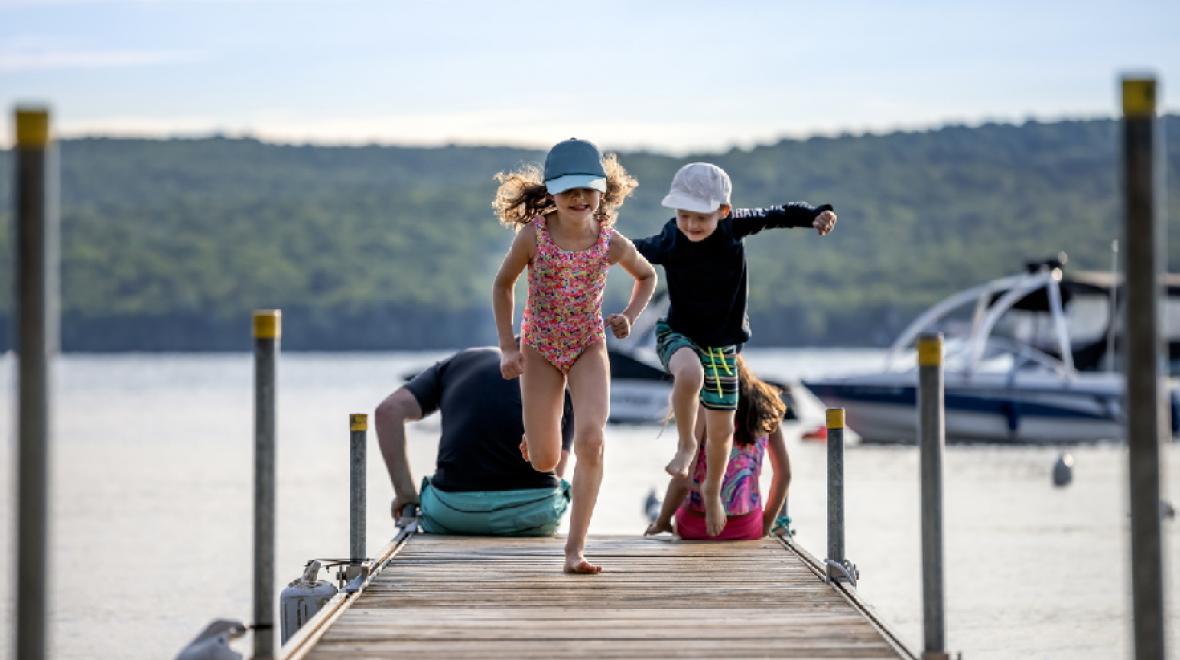
With a heat wave impacting Washington this week, many families across the state have health questions and concerns in mind.
Tony Woodward, M.D., medical director of emergency medicine at Seattle Children’s, provides the following advice for parents and caregivers about how to beat the heat as well as keep their kids safe this summer.
This excerpted post was originally published on the Seattle Children’s website.
1. Keep kids out of hot cars.
Leaving a child alone in a car can result in deadly consequences, even on just a warm day.
“It doesn’t take very long: A child’s body can heat up three to five times faster than an adult’s body,” says Woodward. “When you combine this with the fact that the temperature in your car can rise nearly 20 degrees in just 10 minutes, dangerous and potentially lethal heatstroke can develop quickly.”
Unfortunately, children die each year from heat-related deaths after being trapped inside motor vehicles. According to Kids and Car Safety, the average number of child deaths per year is approximately 38, or one every nine days.
“The majority of these children are 2 years old or younger,” says Woodward. “Children this young have very little control over their environment, so it’s up to us to ensure that they are safe.”
Here are a few things parents can do:
- Leave a phone, purse or briefcase in the backseat of the car when a child is in the backseat. This simple reminder will help caregivers remember to look in the backseat where the child is located before leaving the car.
- Set a reminder on a smart phone calendar to ensure a child was taken and dropped off at day care.
- Ask the day-care provider to call within minutes if your child is late.
- Make sure to lock the car doors and trunk when you’re not using the vehicle. Teach kids that the car is not a safe place to play.
- Call 911 right away if you see a child left alone in a car.
2. Enjoy the water safely.
While the local lake or pool may provide a respite from the heat, parents and caregivers should be mindful of the dangers water presents.
“Drowning is the second-leading cause of unintentional injury-related death for children ages 1–14,” says Woodward. “Many of these accidents are preventable.”
The Washington State Drowning Prevention Network urges parents to exercise extra attention to water safety this year because Washington state swimming pools and beaches are facing a lifeguard shortage.
With prevention in mind, Woodward advises:
- Never leave children alone in or near the water, even for a minute. Watch children with care in and around water, staying within touching distance of young children. Have adults take turns being “water watchers” during group events.
- Young children need to wear life jackets when playing in or near water and while on docks. Children, teens and adults should wear life jackets for boating and while swimming in lakes, rivers or the ocean.
- Bring life jackets with you on outings and vacations. Make sure they are a U.S. Coast Guard–approved, fit properly and are comfortable.
- Teach your children to swim and upgrade their swimming skills each year.
- Be aware of the hazards of swimming in a lake, river or the ocean. Cold water can kill, even on hot summer days.
- Children should swim only when lifeguards are on duty or if an experienced swimmer is watching.
- Pools need a fence that has four sides, is at least 4 feet high, and is self-latching and secured.
- Ponds, 5-gallon buckets and wading pools are drowning hazards for very young children. Empty water from buckets and wading pools, and make sure children are supervised around water.
3. Protect your child from too much sun.
While the summer months do come with their risks, they are also a great time for families to get outdoors and stay active. Woodward recommends parents take the following steps to safeguard their child from the ill effects of exposure to too much sun:
- The sun’s rays are strongest between 10 a.m. and 4 p.m., so be extra careful during that time.
- Whenever your child is outside, use sunscreen with a sun protection factor (SPF) of 15 to 30. Choose one that protects against UVA and UVB rays.
- Apply sunscreen 30 minutes before going outside. Reapply every two hours and after being in the water or sweating.
- Keep children younger than 1 out of the sun as much as you can. Dress babies in lightweight, light-colored clothing with long sleeves and long pants. Always cover their head. Children younger than 6 months of age can have small amounts of sunscreen put on their faces and the backs of their hands, but be careful not to get it in their eyes or mouth.
- Most of the sun’s burning rays go right through clouds, so apply sunscreen even on cloudy days.
- Select sunglasses for babies and children that provide 100-percent UV protection.
- When it is 90 degrees or above and humid, children should not play outside or exercise for more than 30 minutes at a time.
- Ensure that your child drinks plenty of fluids, even if they are not thirsty. Water is best.
4. Prevent window falls.
The summer weather has parents and caregivers opening windows and doors to try to get some circulation and relief from the heat. Woodward warns that open windows can be a big danger to young children.
“Every year, young children are injured and even killed when they fall out of windows,” he says.
Most of these falls occur in the spring and summer months, when windows are open, resulting in 3,500–5,000 children being hospitalized after a window fall every year. “These tragedies can be prevented with child safety devices and careful habits,” reminds Woodward. Prevent window falls by following these tips:
- Know that window screens are not safety devices. They are designed only to keep bugs out, not to keep kids in. Most window falls happen from windows with screens properly installed.
- Install child safety window stops that prevent windows from opening more than 4 inches.
- If you must open a window more than 4 inches, install a window guard that can easily be removed by an adult in an emergency.
- Don’t let your child see you remove or bypass window stops, window guards or any child safety products. Children imitate adults, so if they see their caregiver bypassing a safety product, they’re likely to try to do the same.
- If you have double-hung windows, open them from the top, rather than from the bottom.
- Keep beds, cribs and other furniture away from windows. Keep all other items that can be used for climbing away from windows. Children who have fallen out of a window have climbed on furniture, toys and even laundry.
- Make it a rule to play at least 2 feet away from windows, and make sure other caregivers know about the kid-free zone in front of windows, too.
- Be careful when visiting other homes. If you visit a place where windows or balcony doors are not childproofed, close and lock them during your visit, and watch your child carefully.











